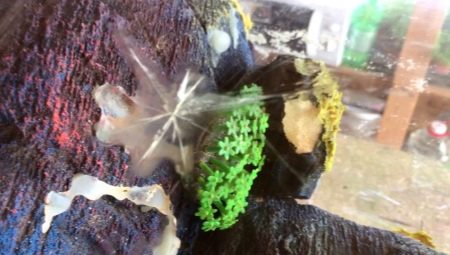The aquarium is a small but surprisingly bewitching world. However, in order to maintain both the aquarium and the inhabitants inside it in order, it is necessary to spend some effort, as well as adhere to some rules for caring for them. One of the common problems with aquariums is the formation of cracks or leaks. About why the aquarium can burst, how to fix the malfunction and what should be considered at the same time, read in this article.
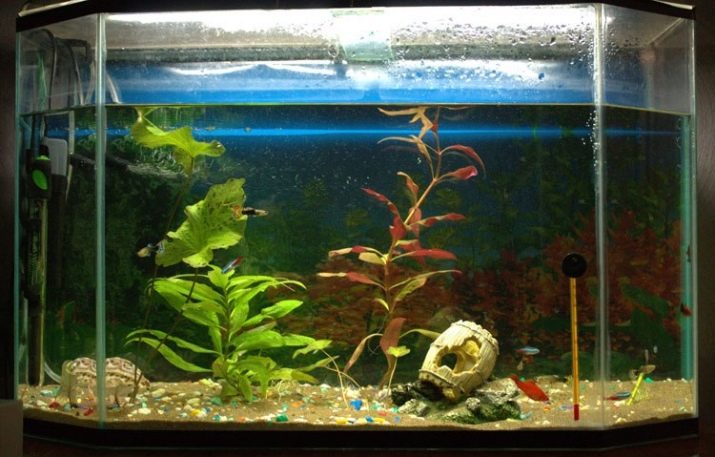
Why do aquariums burst?
As a rule, there are only two main reasons that the glass aquarium has burst, crashed, or leaks - either the manufacturing technology of the tank was incorrect, or the aquarium was simply not properly operated.
Since the pressure exerted by water, even in relatively small volume tanks, is quite large, for their manufacture it is required to use glass of a certain thickness.
If glass of a smaller thickness was used than the norms and rules require, then over time it can “accumulate fatigue” at some points and crack.

Also, the aquarium can leak during operation if poor quality glass, for example, red-hot, was used in its manufacture.
If the container is placed on an uneven surface, then most likely the result will also be a crack. In this case, even a grain of sand stuck under the bottom, not to mention uneven supports, can become the cause of the crack.
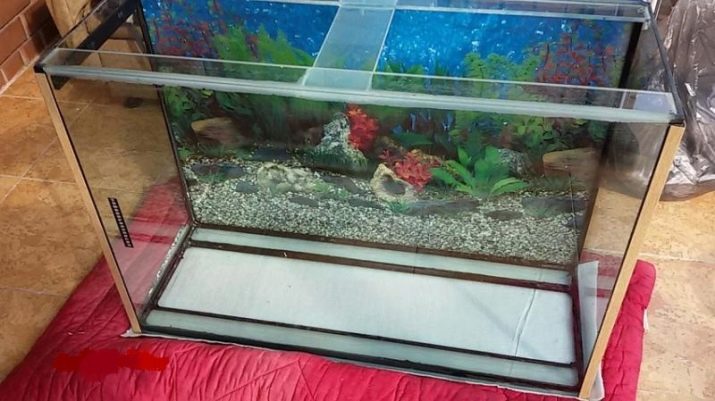
How to glue?
It is worth immediately clarifying for yourself that you can not use ordinary glue to glue the aquarium, which gave a crack or leak.
Pet shops or other specialized points of sale have glue called aquarium sealant.It is it that needs to be used if the aquarium bursts.
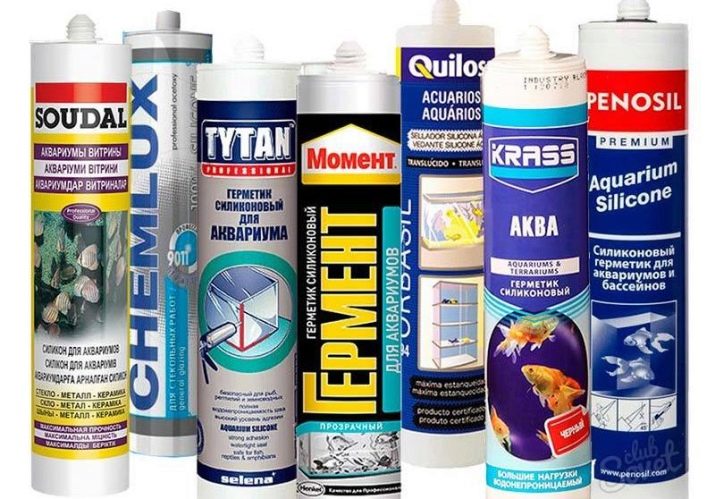
It is a thick, but at the same time fluid substance, which freezes very quickly in the air - after half an hour, the glue already becomes hard. Do not confuse with the time of complete drying - this will take about 24 hours. The main component of the adhesive, due to which a similar property is acquired, is silicon. This type of glue can also be used to “repair” the internal contents of the aquarium (houses, caves and other various toys and homes for fish).
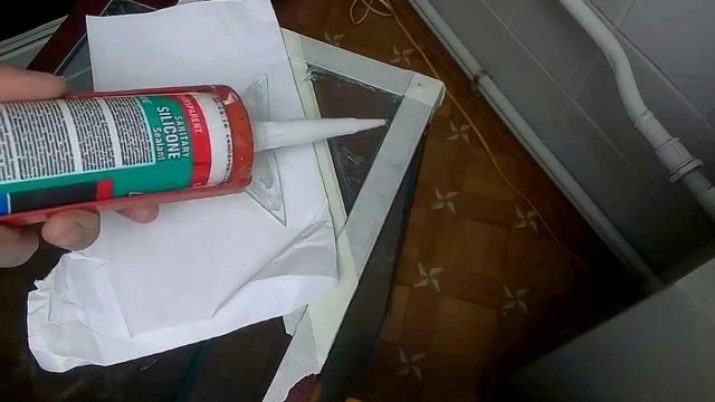
This glue has another name - silicone sealant.
It is worth remembering that you only need to purchase the product that has the inscription "for aquariums" on its packaging.
When using the usual composition, the toxic substances released by it can send the inhabitants of the aquarium to the next world. Compositions that have received positive reviews - “The moment of Herment” and “Titan”. Their main property remains resistance to sea water.

How to glue?
The degree of possible restoration of the aquarium with your own hands depends on how significant the crack or spallation is. If the upper part of the aquarium has broken off, then it is easy to fix it yourself. If the aquarium has not cracked, but flowed along the seam, then it will be enough to glue it with sealant, which is also a task quite feasible for a fish lover.
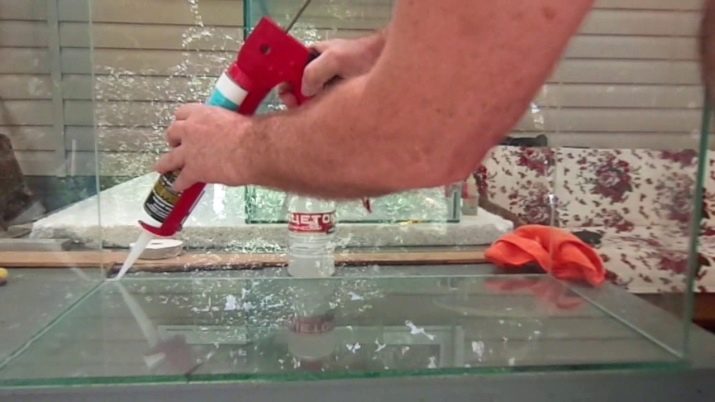
The step-by-step instructions on how to do this are described below.
- It is necessary to prepare the necessary materials - the glue itself (sealant), degreasing agent, masking tape and several blades.
- It is necessary to empty the aquarium tank. It will also be best to clean it with a detergent, and then let it dry thoroughly.
- Next, you need to clean the joint between the glasses from the past sealant using a blade broken in half in the place of leaks. It is recommended to work with the blade in special protective gloves.
- Then you will definitely need to wipe the glass with a degreasing compound.
- After that, glue the glass with a protective (masking) tape around the seam.
- Apply new sealant and leave to dry.
- When the resuscitated suture is completely dry, it must be checked for leaks. If all is well, then the process can be considered complete. If the leak was not resolved, then it is necessary to repeat the gluing of the two glasses along the seam again.
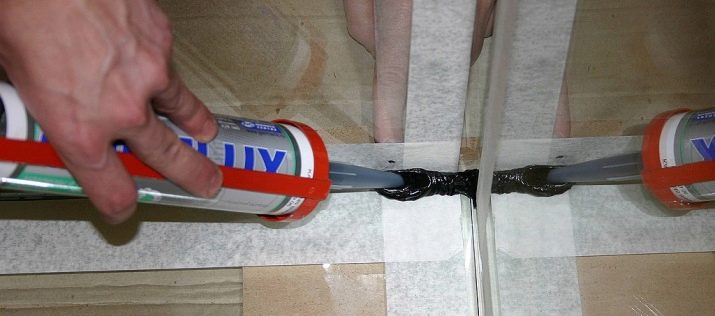
If the damage is serious, for example, a crack has formed on the entire face, then it is best to glue a new frameless aquarium.
You can resort to the services of workshops for working with glass or purchase a finished product in a store, although making an aquarium is quite realistic at home.
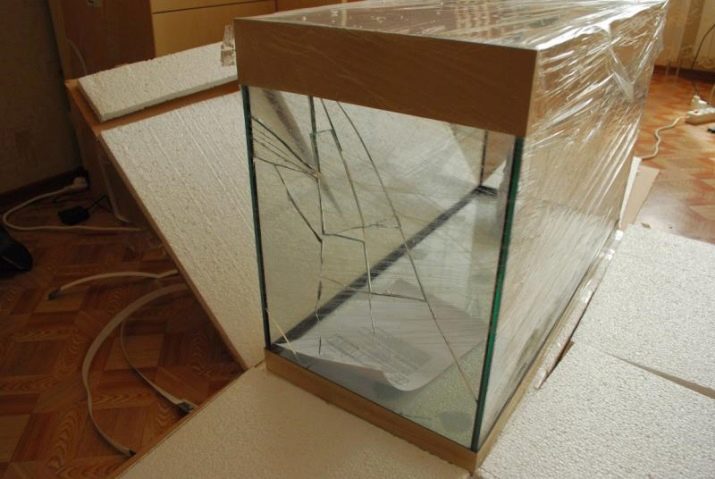
As a basis, you can take various types of glass - plexiglass, optivite and even ordinary glass.
Instructions on how to do this correctly are presented below.
- First of all, it is necessary to determine the size of the future aquarium, and then cut the glass by these sizes.
- It is necessary to cut 5 glass blanks to get a full aquarium with a bottom.
- Now you need to wipe the glass with a degreasing compound and glue the edges with a protective tape.
- You can start gluing the glass in any order, applying sealant to the joined edges of the glass. However, it will be most convenient to start doing this by gluing together the front of the aquarium and its bottom. It is important every time to ensure that the angle between the faces is straight. To fix the structure for the drying period, you can use various objects.
- You must repeat the same with all sides of the aquarium.
- After the aquarium is fully assembled and glued, you need to leave it to dry for 1 hour. Then grease all seams again with sealant.
- After the last application of the sealant, it will take 24 hours to fully dry.
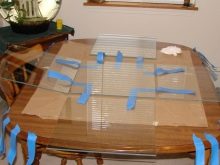


Before use, you need to fill the aquarium with water and check for leaks.
If a leak is found, then drain the water, allow time for the joints to dry out from moisture, and then grease all the joints with glue again.
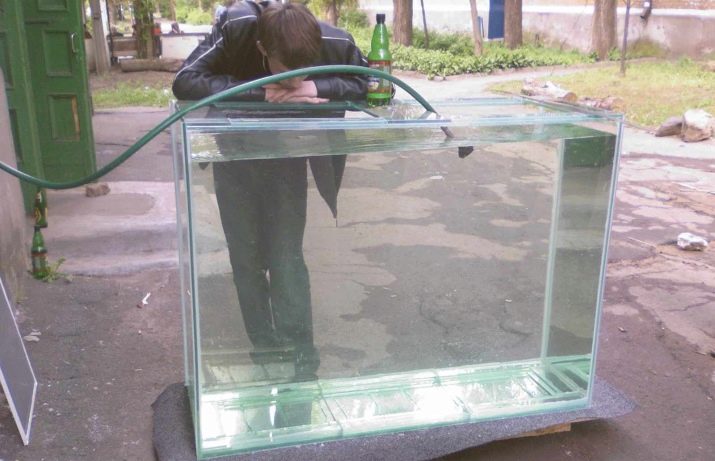
Professional Tips
First of all, it is necessary to remember that even to eliminate small damage, it is necessary to completely free the aquarium from both living creatures and all other contents.
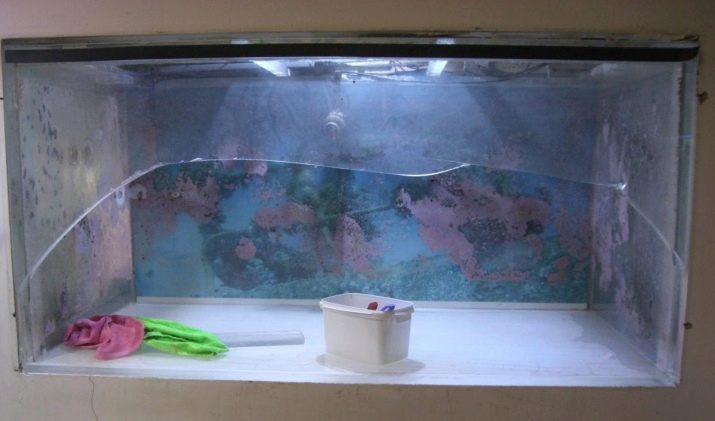
If excess glue gets on the glass, then you can remove them by wiping the surface with a cloth moistened with a solution of vinegar.
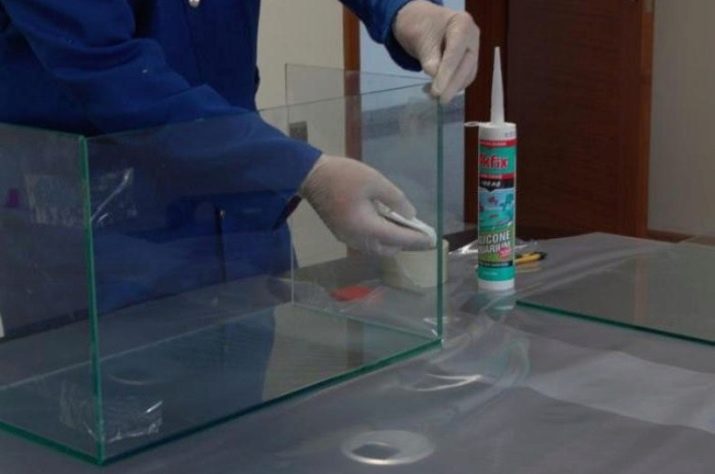
Of course, it will be much more reasonable to prevent cracks and other possible problems with the aquarium than to eliminate them in an emergency. A good solution in this sense are stiffeners and screeds. The first are long and narrow glass plates that stick to the long edges of the aquarium. They are glued to the top, and later stiffeners are attached to them.
This design strengthens the aquarium and helps it withstand the pressure exerted by the water on the walls. Only due to the fact that both stiffening ribs and screeds strengthen the opposite sides, the concept becomes stronger.
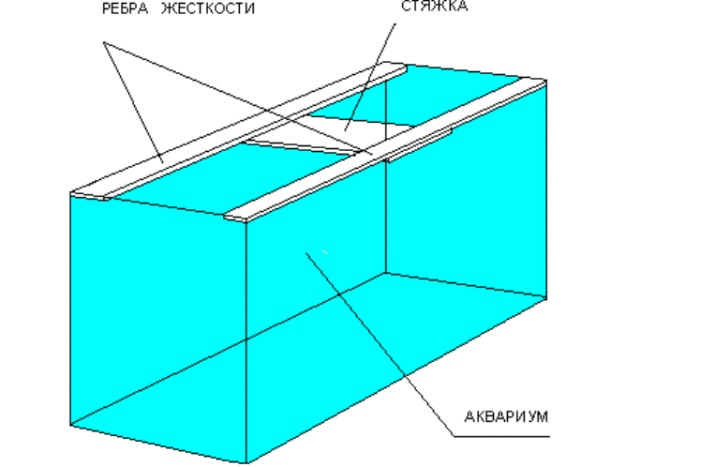
In conclusion, it is worth noting that the best prevention of an aquarium from cracks is to purchase products from a well-known manufacturer. If this is not possible, then you must independently check the thickness of the glass, the bonding quality, as well as the accuracy of the design of stiffeners before buying.
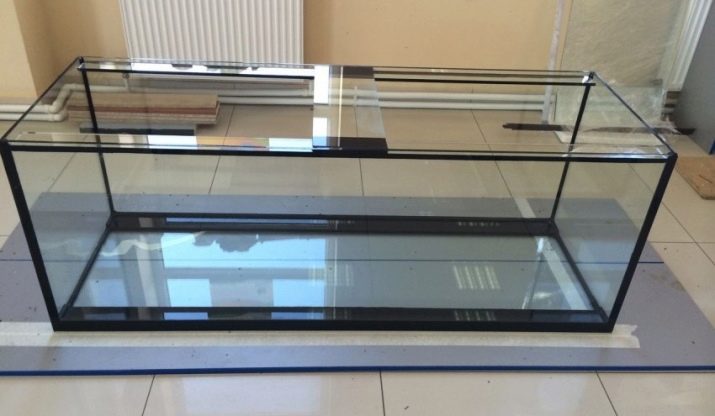
Useful information on repairing a cracked aquarium can be found in the next video.
